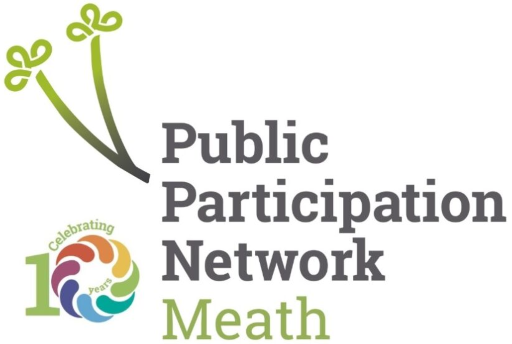All-Ireland Pollinator Plan: June 2025 Newsletter
Comments : 0
| View this email in your browser |
 Newsletter: June 2025 The All-Ireland Pollinator Plan is a framework bringing together different sectors across the island of Ireland to create a landscape where pollinators can survive and thrive. Its implementation is coordinated by the National Biodiversity Data Centre. |
To spot this month: keep an eye out for the Red-tailed Bumblebee This bumblebee is very common and is often spotted in gardens. The females are entirely black with a red tail. Photograph: Jonathan Derham.  Submit your bumblebee sightings To do this month: make sure your garden doesn’t have any hunger gaps Try to make sure that your garden has something flowering from March to October for pollinators to feed on. In mine, it’s currently the Clover and Bird’s-foot-trefoil in the lawn as well as various trees and shrubs (Laburnum, Lavender, Salvia, Catmint). The bumblebees and solitary bees are earning their keep at the minute as they’re also very busy pollinating my raspberries, strawberries, tomatoes and courgettes!  2022 blog – the joy of making your garden pollinator friendly Final chance to submit your ideas and suggestions for the next All-Ireland Pollinator Plan 2026-2030 The next version of the AIPP will be developed across this year. We want the next Plan to be the most ambitious yet. Please submit your ideas/suggestions – however big, small or radical! Submit ideas at any time and as often as you like. This public consultation form will close on the 30th June. Please submit your ideas by then, so that all can be fully considered.  Submit your ideas The Grasslands Trail – showcasing more Great Irish Grasslands In collaboration with the National Parks and Wildlife Service, the National Biodiversity Data Centre is delighted to publish an updated version of the Grasslands Trail booklet. The ‘Grasslands Trail’ is a network of public and private grasslands spread across the island. All of these sites are managed sensitively, with nature conservation and grassland diversity in mind. The Grasslands Trail began as a pilot initiative in 2023. The updated booklet expands the number of trail sites from nine to twenty-seven and includes a new section featuring farmland sites. The Grasslands Trail allows locals and visitors to gain a better understanding of endangered pasture and meadow habitats. For those sites that are publicly accessible, you can see and experience up close what great Irish grasslands look like. Each site in the booklet has a profile to give you a flavour of that grassland, from orchids to rare breed cattle, from patches of meadow to vast areas of grassy habitats. The Grasslands Trail is a tour through the amazing diversity of some of Ireland’s semi-natural grasslands. Over time, we will continue to expand the trail, but for now, we hope you enjoy those highlighted.  Find out more and download the booklet in English or Irish New online course: Managing Communities for Pollinators To celebrate World Bee Day on the 20th May, we launched a free online course for community groups: Managing Communities for Pollinators. This course is aimed at community groups who are interested in making their community pollinator friendly such as Tidy Towns, Keep Northern Ireland Beautiful, community gardens, residents’ associations, and youth groups. From pesticide alternatives to plant lists to pollinator-friendly mowing tips, this is a great resource for any community rural or urban, large or small. Pollinator numbers are in decline on the island of Ireland, but records from the National Biodiversity Data Centre show that local populations are increasing where actions are being taken to help them. This is thanks to different sectors coming together to transform their landscapes for pollinators, not least community groups. The new course draws on our guideline: ‘Local communities: actions to help pollinators’, providing clear, evidence-based actions for any community, whether just starting out or already doing work for biodiversity.  Enroll for free here New online course: Pollinator-friendly Hedgerows We are also delighted to release a second new online course: Farmland Pollinator-friendly Hedgerows. With Ireland believed to be the most hedge dense country in the world, the course aims to help farmers learn which pollinators they might find on their farm, and which evidence-based actions they can take to help them. The course is designed to give farmers, farm advisors and agricultural students insight into the value of native species-rich hedgerows and the many benefits they can provide such as shade and shelter for livestock, nutrient buffering to protect water quality, flood alleviation and field drainage and refuge for beneficial insects, birds and pollinators. With information about how to assess and manage your existing hedgerows and restore and create new ones, this course is a handy source of information about why hedgerows are important for the farm and for biodiversity. We would like to thank the Department of Agriculture, Food and the Marine for their support in developing this course.  Find out more and enroll for free here Let it Bloom June We are incredibly grateful to all those who supported No Mow May. It has resulted in lots of new mini meadows emerging across the island. Some people have even reported Orchids popping up in their gardens for the first time! No Mow May is over, but that doesn’t mean you have to start cutting regularly again. Mowing less from April until September is one of the best ways you can help pollinators. So why not keep the buzz going with #LetItBloomJune? Cutting once a month rather than every couple of weeks, and removing the grass clippings when you do mow, can help native wildflowers like Red and White Clover, Self-heal and Birds-foot-trefoil appear.  Short-flowering Meadow flyer Pitches for Pollinators Over the summer holidays, schools across the island of Ireland are asked to help the bees by taking part in ‘Pitches for Pollinators’. This annual campaign aims to feed hungry pollinators by leaving school pitches unmown over the summer, allowing wildflowers to emerge. Records submitted to the National Biodiversity Data Centre show that Red and White Clover are among the most popular flowers for bees during the summer months. By reducing mowing over the holidays, plants like these can grow in school pitches. During term time, pitches and grassy areas are regularly mown giving children important areas to play. But from the end of June until mid-August, leave pitches unmown to allow wildflowers to grow naturally.  Find out more Can you help by carrying out a 10-minute Flower-Insect Timed Count (FIT Count) FIT Counts are an important way that you can help us monitor pollinators. Download the free FIT Count App, watch a 50x50cm patch of flowers for 10 minutes and count how many insects visit. You can carry out a FIT Count anywhere, and on any flower, but where you can, please use one of our 15 target flowers. In June, it is especially useful to carry out FIT Counts on White or Red Clover. You do need to wait until it’s sunny and at least 13 ⁰C though! In 2024, 784 validated FIT Counts were submitted by 135 different volunteers. The average number of insects per FIT Count was 7. Why not try one where you are to see how your site compares.  Learn more about FIT Counts 2025 Wild Bee Festivals The Wild Bee Festival is an annual event coordinated by the All-Ireland Pollinator Plan aiming to raise awareness of Ireland’s pollinators and how to help them in local communities. The 2025 Wild Bee Festival will take place in Abbeyleix on the 21st and 22nd June in collaboration with Abbeyleix Tidy Towns and Laois County Council. The 2025 festival will feature a series of walks and talks led by biodiversity experts and community groups on pollinators and the simple actions we can take to help them. Talks will include: ‘How Communities can Help Pollinators’, ‘Collecting Wildflower Seeds’, and guided walks of biodiversity areas led by Abbeyleix Tidy Towns. Following the success of the 2022 Wild Bee Festival in Skerries, and the 2023 Festival in Tralee, both have continued to run an annual festival and keep the buzz going. If you are on the east coast, the Skerries Wild Bee Festival is taking place from Friday 20th – Sunday 22nd June, and the Kerry Wild Bee Festival from Friday 4th – Sunday 6th July. Both festivals have a fantastic range of talks, walks, and workshops for pollinator enthusiasts of all ages and all levels of expertise.  Find out more The National Biodiversity Data Centre is a Company Limited by Guarantee. Register Number: 730718. National Biodiversity Data Centre, SETU West Campus, Carriganore, Waterford, Ireland, X91PE03 |

